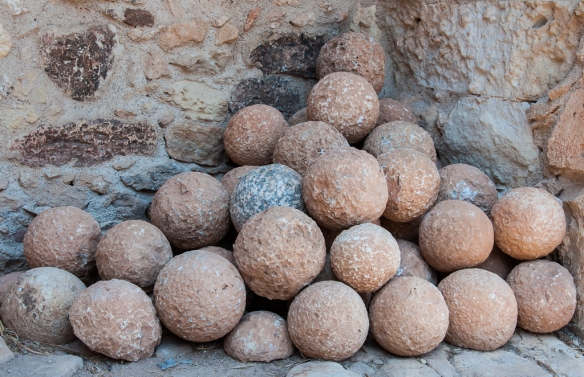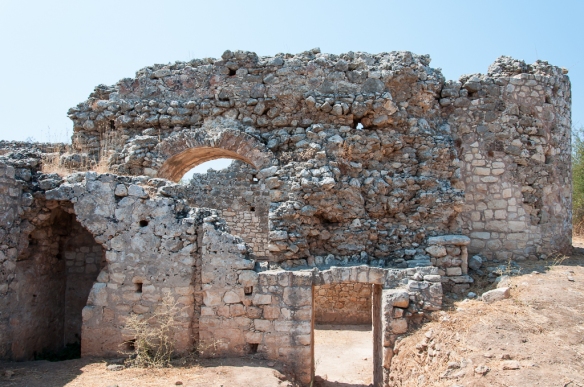The site of Ancient Aptera is in western Crete, not far from Khania, high up on a plateau with beautiful views towards Souda Bay. It’s an interesting site because it has such a wide range of buildings reflecting the fact that it has been occupied since Minoan times, though most of the site that is accessible today seems to be Roman.
From the Classical Greek period onward it was a city right through the Hellenic period of the Roman occupation. Indeed the monastery of Agios Ioannis Theologos (pictured above) was occupied right up until the 1960s. In the courtyard of the monastery, rather incongruously, is a pile of stone cannonballs:
One of the most impressive things to see on the site are the Roman cisterns, designed and built so well that they are still remarkably well-preserved. The cistern openings do not give a true idea of the size of the underground cisterns themselves.
 There’s no sign of water anywhere on the site today, so it is hard to imagine how there was sufficient water in the past to store in the cisterns and to feed the Roman baths below. In amongst the baths are other buildings whose purpose is difficult to make out from the remains:
There’s no sign of water anywhere on the site today, so it is hard to imagine how there was sufficient water in the past to store in the cisterns and to feed the Roman baths below. In amongst the baths are other buildings whose purpose is difficult to make out from the remains:
On the wall of one of these buildings is a stone block with chisel marks on it. I am not sure but I think it may be Minoan, as it reminds me of blocks with similar markings that I have seen at Knossos.
On its own on a promontory overlooking the bay itself is a Turkish fort, unfortunately fenced off so that I can’t get closer to have a look inside.
To the rear of the site is are the remains of a small amphitheatre, probably Greek:
and this may be a Greek temple with niches to hold statues of gods:
Finally, I found one of the most evocative parts of the site the remains of a Roman villa, strewn with the debris of its columns. There was a particular atmosphere on this spot and I seemed to get a sense what it must have been like for the people who lived there with its views looking south towards the White Mountains.
Today the site is extremely hot under the scorching midday Cretan sun and there’s very little shade to provide any relief.















